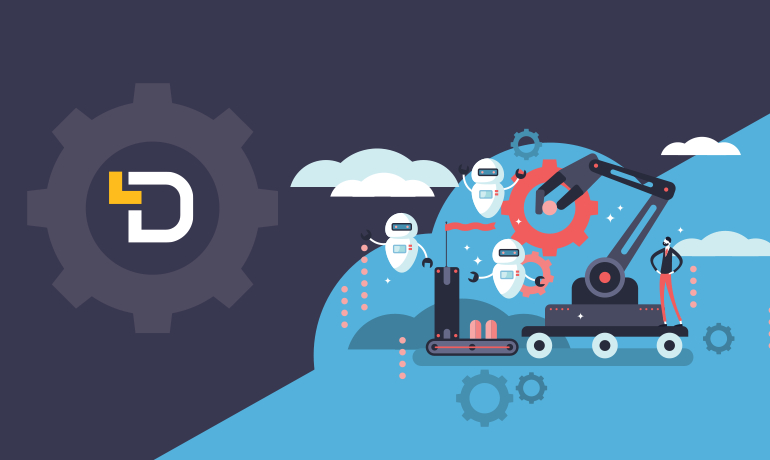The distance between a construction technology solution promise and genuine achievement is a matter of concern. Referencing past conversations with many project managers who've expressed heartache when attempting to close the gap, this DADO post aims to solve the key challenges project managers responsible for implementing new technology must face: their dual role, the variety of internal stakeholders to be served, a legitimate resistance to change, the balanced degree of promotion, the decision of jobsite implementation, and the need for one person to take responsibility.
10 Tips for Implementing a New Construction Technology
1. Establish company objectives.
Clarify upfront what the company wants to achieve by implementing the construction technology. Some companies want to fully automate their administration workflow, integrate with cloud platforms, connect and collaborate seamlessly with project stakeholders and other providers. The time needed, training, and costs will vary depending on the company's business goals.
2. Assess the current process.
Once a company knows its objectives, the next step is to clearly understand the current process. It is very helpful to sketch a graph of the current process. Unfortunately, many companies look to solutions providers to offer up the best workflows, but they are not intimately familiar with a company's proprietary practices. Documenting processes allows issues to be resolved early. In some instances, procedural problems that haven't been dealt with are unearthed during the process of deploying a new construction technology. Prioritizing and fixing any problems uncovered during the assessment phase allows companies to develop and nurture more efficient processes to ultimately drive the prospective construction technology.
3. Identify leadership and protocols.
Leadership must communicate the objectives for deploying the new construction technology solution, and their full commitment to its success. Deciding early on what the procedure is for dealing with office or field personnel who refuse to use the new solution or delay training can minimize deployment disruption and internal tension.
4. Clearly define what the construction technology must do.
With the overall objective and current process clearly understood, defining the specific requirements of the new construction technology solution becomes easier. Specifying the required functions upfront will minimize expenses associated with changing requirements during implementation. Anticipating where the company wants to be will drive many decisions in the development, training, and monitoring phases of the implementation.
5. Compare construction technology solutions and support.
Conferences, trade shows, online demonstrations, and vendor visits all allow prospective users to "test drive" construction technology and identify which solutions best meet the needs of their business. The initial assessment keeps the evaluation team from falling victim to the siren call of additional functionality that will most likely drive up costs without better meeting the company's true objectives. At the same time, conducting the initial groundwork ensures the solutions chosen for the proverbial short list actually provide the essential functionality to bolster proprietary processes.

6. Conduct cost benefit analysis.
Ultimately, choosing the right construction technology for a construction company comes down to a balance between functionality, ease of use, and cost. Understanding the full cost and anticipated benefits of the system is a critical component of the evaluation.
7. Steadily implement.
Employees may become frustrated when they show up to work to find out their already busy day is going to become a lot tougher because they are expected to learn a new technology. Let teams see just enough to learn the basics of the system for a week or so. Before pulling the pin on a full implementation, consult with users to make sure they have what they need to be successful in the change.
8. Train for success.
Most construction technology solutions offer training programs to support their products. The challenge is ensuring that the training supports the specific practice and is not a "one-size-fits-all" approach. Company-specific training that focuses on proprietary processes used by the office and field personnel rather than the software is the most effective. Training also should be tailored to the role each person plays in the company.
9. Measure results.
Appropriate use and adoption can be monitored usage reporting.
10. Memorialize lessons learned.
With each successful implementation, companies build trust with their crew. Tread lightly, implement what works and not just what’s cool, and work hard to make it an enjoyable and useful transition for all involved.
CATEGORIES
- Construction Technology (23)
- Construction Document Management (14)
- Construction Document Search (13)
- DADO (8)
- Document Management Systems (8)
- Intelligent Search (6)
- Smart Forms (4)
- intelligent document search (4)
- File Search (3)
- Insider (3)
- Productivity (3)
- Search Engines (3)
- VDC (3)
- tech friction (3)
- Cost Control (2)
- Ctrl F (2)
- Customer Stories (2)
- Digital Process (2)
- Opinion (2)
- Risk Management (2)
- Smart Documents (2)
- Virtual Design and Construction (2)
- field (2)
- integrations (2)
- lean construction (2)
- safety compliance (2)
- Collaboration (1)
- DMS (1)
- IGI (1)
- OSHA (1)
- Optical Character Recognition (1)
- Project Management (1)
- Safety (1)
- TAUC (1)
- document administration (1)
- index documents (1)
- mechanical engineering (1)
- rework (1)
- voice driven (1)
Archives
- October 2020 (5)
- February 2021 (4)
- April 2021 (4)
- June 2021 (4)
- July 2021 (4)
- July 2019 (3)
- September 2020 (3)
- November 2020 (3)
- December 2020 (3)
- January 2021 (3)
- March 2021 (3)
- May 2021 (3)
- August 2021 (3)
- March 2022 (3)
- May 2022 (3)
- October 2021 (2)
- January 2022 (2)
- February 2022 (2)
- March 2020 (1)
- April 2020 (1)
- July 2020 (1)
- August 2020 (1)
- September 2021 (1)
- November 2021 (1)
- December 2021 (1)
- April 2022 (1)
- July 2022 (1)

